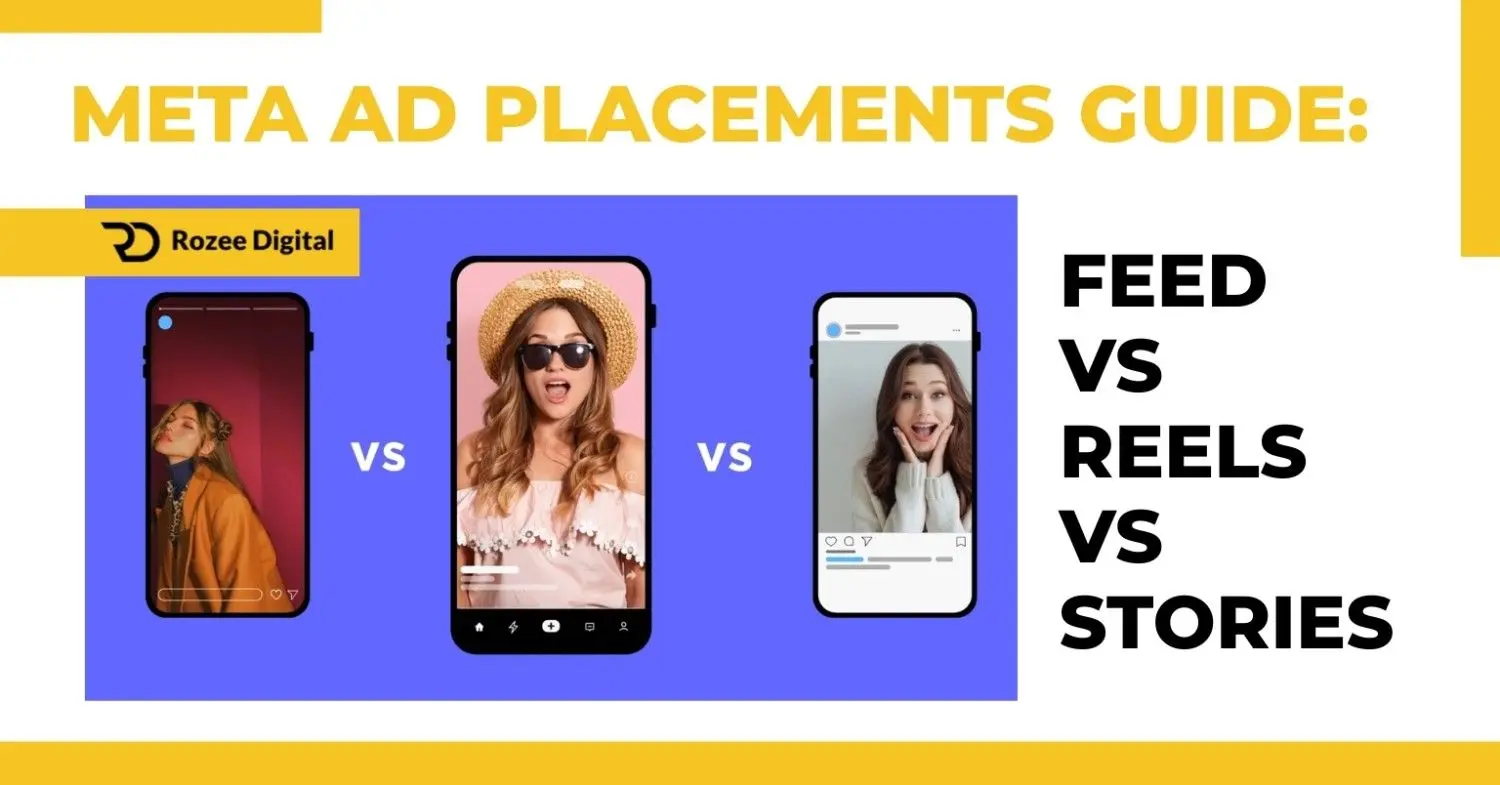
The Power of Ad Creatives in Ecommerce, In the competitive landscape of ecommerce, ad creatives play a crucial role in capturing the attention of potential customers and driving conversions. Ad creatives, such as images and videos, are the visual components that communicate the value and appeal of a product or service to the target audience. They serve as the first point of contact between the brand and the consumer, making them a powerful tool in the marketing arsenal of ecommerce businesses.
Importance of Ad Creatives for Ecommerce Businesses
Ad creatives hold immense importance for ecommerce businesses. They serve as a means of grabbing the attention of potential customers and sparking their interest in a product or service. In a crowded digital marketplace, captivating ad creatives can help a brand stand out from the competition and make a lasting impression on the target audience.
Moreover, ad creatives have the ability to convey the unique selling points of a product or service in a visually appealing and engaging manner. They allow businesses to showcase their offerings, highlight key features, and demonstrate how their product or service can fulfill the needs and desires of the consumers.
By investing in well-crafted ad creatives, ecommerce businesses can build brand awareness and establish brand identity. Consistent and visually appealing ad creatives help to create a cohesive brand image, making it easier for consumers to recognize and remember the brand.
How Ad Creatives Influence Consumer Behavior
Ad creatives have a significant impact on consumer behavior. They can evoke emotions, create desire, and influence purchasing decisions. Well-designed and persuasive ad creatives have the power to capture the attention of consumers, evoke positive emotions, and ultimately drive them to take action.
The visual appeal of ad creatives plays a vital role in attracting consumers and piquing their interest. High-quality images and videos can create a sense of desire and aspiration, making consumers more inclined to explore a brand’s offerings.
Furthermore, ad creatives can leverage storytelling techniques to engage consumers on an emotional level. By telling a compelling story through visuals, ad creatives can evoke emotions that resonate with the target audience. This emotional connection can lead to increased brand loyalty and customer engagement.
Understanding the importance of ad creatives and their influence on consumer behavior is essential for ecommerce businesses. By investing in compelling ad creatives that effectively communicate the value and appeal of their offerings, businesses can enhance their marketing efforts, attract a larger audience, and drive conversions.
In the next section, we will delve into the different ad creative formats available for ecommerce businesses, such as image ads, video ads, carousel ads, slideshow ads, and collection ads. Each format has its own characteristics and benefits, allowing businesses to choose the most suitable option to convey their message and captivate their target audience.
Understanding Ad Creative Formats
When it comes to advertising in the ecommerce industry, ad creative formats play a crucial role in capturing the attention of potential customers and driving conversions. Different formats offer unique ways to showcase products and engage with the target audience. Let’s explore the most common ad creative formats used in ecommerce:
Image Ads
Image ads are one of the most widely used formats in ecommerce advertising. These ads primarily rely on captivating visuals to attract the audience’s attention. With a single static image, advertisers can highlight the key features and benefits of their products. Image ads are known for their simplicity and ability to convey a clear message efficiently.
Video Ads
Video ads have gained significant popularity in recent years due to their ability to engage and captivate viewers. Ecommerce video ads allow advertisers to demonstrate their products in action, showcase unique selling points, and evoke emotions. Videos have a higher chance of capturing the audience’s attention and conveying the brand’s message effectively.
Carousel Ads
Carousel ads provide a dynamic and interactive way to showcase multiple products within a single ad. This format allows advertisers to display a series of images or videos that users can scroll through horizontally. Carousel ads are effective in telling a story, highlighting different product variations, or presenting a collection of related items. They provide a visually engaging experience and encourage users to explore more products.
Slideshow Ads
Slideshow ads are similar to video ads but consist of a sequence of static images. These ads offer a cost-effective alternative to video ads, as they don’t require extensive production resources. Slideshow ads can be created with a combination of images, text overlays, and transitions to create a visually appealing and informative ad experience.
Collection Ads
Collection ads are designed to provide a seamless shopping experience within the ad itself. This format combines a primary image or video with a grid of related product images below. Users can click on the individual products within the collection to view more details and make a purchase. Collection ads are particularly effective for showcasing a range of products within a specific category or promoting a new collection.
Understanding the different ad creative formats available allows ecommerce businesses to explore various ways to engage with their audience and drive conversions. Each format has its own unique characteristics and benefits, making it essential to choose the format that aligns with the campaign objectives and resonates with the target audience.
In the following sections, we will delve deeper into each ad creative format, discussing their characteristics, benefits, and best practices for creating impactful ads.
Image Ads
In the world of ecommerce, image ads play a crucial role in capturing the attention of potential customers and driving engagement. These ads utilize compelling visuals to convey your brand message and entice viewers to take action. Let’s explore the characteristics and benefits of image ads, as well as some best practices for creating effective ones.
Characteristics and Benefits of Image Ads
Image ads are static advertisements that rely on a single image to communicate your message. Here are some key characteristics and benefits of image ads in the context of ecommerce:
- Visual Impact: Image ads have the power to make an immediate visual impact. A well-designed and visually appealing image can capture the viewer’s attention and create a lasting impression.
- Simplicity: Image ads offer simplicity in their format. With a single image, you can deliver a clear and concise message, making it easier for viewers to understand your offer or product.
- Brand Recognition: Images have the ability to evoke emotions and create associations with your brand. By incorporating your brand elements, such as logos or color schemes, into the image ad, you can enhance brand recognition and build familiarity with your audience.
- Versatility: Image ads are versatile and can be used across various advertising platforms, including social media, display networks, and search engines. This flexibility allows you to reach a wider audience and maximize your ad’s visibility.
Best Practices for Creating Effective Image Ads
To ensure the effectiveness of your image ads, consider the following best practices:
- Choose High-Quality Images: Select high-resolution images that are visually appealing and aligned with your brand aesthetic. Avoid pixelated or low-quality images that can negatively impact the perception of your brand.
- Keep it Simple: Focus on a single key message or product in your image ad. Avoid cluttering the ad with excessive text or multiple images, as this can distract the viewer and dilute the impact of your message.
- Use Strong Visuals: Opt for eye-catching visuals that immediately grab the viewer’s attention. Incorporate vibrant colors, compelling compositions, or striking product images to make your ad stand out.
- Consider Brand Consistency: Maintain consistency with your brand’s visual identity. Use fonts, colors, and design elements that align with your brand guidelines to create a cohesive and recognizable image ad.
- Include a Clear Call-to-Action: Encourage viewers to take the desired action by including a clear and compelling call-to-action (CTA). Whether it’s “Shop Now,” “Learn More,” or “Get Started,” make sure the CTA stands out and prompts users to engage with your ad.
- Optimize for Mobile: With the increasing use of mobile devices, it’s essential to ensure that your image ads are mobile-friendly. Use images that are optimized for smaller screens and consider the placement and visibility of your CTA on mobile devices.
By following these best practices, you can create image ads that effectively communicate your brand message, capture the attention of your target audience, and drive conversions in the competitive landscape of ecommerce.
Remember to constantly analyze the performance of your image ads and make data-driven optimizations to improve their effectiveness. Experiment with different visuals, messaging, and targeting strategies to find the winning combination that resonates with your audience and achieves your advertising goals.
Video Ads

Video ads have become an increasingly popular ad creative format in the world of ecommerce. These ads utilize motion, sound, and visual storytelling to engage and captivate the audience. With their ability to convey a message effectively, video ads have numerous characteristics and benefits that make them a valuable tool for ecommerce businesses.
Characteristics and Benefits of Video Ads
Video ads offer a dynamic and immersive experience for viewers. They allow ecommerce businesses to showcase their products or services in action, demonstrating their features and benefits more effectively than static images or text. Here are some key characteristics and benefits of video ads:
- Engagement: Video ads have the power to grab the attention of viewers and create an emotional connection. The combination of visuals, audio, and storytelling can evoke strong emotions, resulting in higher engagement rates and increased brand recall.
- Storytelling: Video ads enable ecommerce businesses to tell a story. By crafting a narrative around their product or brand, they can connect with viewers on a deeper level and leave a lasting impression.
- Demonstration: Video ads provide an opportunity to showcase products in action. Whether it’s demonstrating how a piece of clothing fits or highlighting the functionality of a gadget, videos can effectively communicate the value and utility of the product.
- Brand Personality: Video ads allow ecommerce businesses to express their brand personality and values. Through the use of visuals, music, and voiceover, they can create a distinct brand identity and build stronger connections with their target audience.
- Versatility: Video ads can be adapted to various platforms and formats, making them versatile for different marketing strategies. They can be used on social media platforms, websites, and even in video streaming services, reaching a wide range of potential customers.
Best Practices for Creating Engaging Video Ads
To create engaging video ads that resonate with your audience, consider the following best practices:
- Keep it concise: Attention spans are short, so aim to deliver your message within the first few seconds. Capture your viewers’ attention early on and maintain their interest throughout the video.
- Focus on storytelling: Craft a compelling narrative that connects with your target audience. Tell a story that resonates with their needs, desires, or aspirations. Use visuals, music, and voiceover to enhance the storytelling experience.
- Highlight the benefits: Clearly communicate the benefits of your product or service. Show how it solves a problem or fulfills a need for your customers. Use visuals to demonstrate the value and effectiveness of your offering.
- Optimize for mobile: As more people consume video content on mobile devices, ensure that your video ads are optimized for mobile viewing. Use subtitles or captions to make your message accessible even without sound.
- Maintain brand consistency: Your video ads should align with your brand identity and messaging. Use consistent visual elements, colors, and fonts to create a cohesive brand experience.
- Include a call to action: Encourage viewers to take action after watching your video. Whether it’s visiting your website, making a purchase, or signing up for a newsletter, provide a clear call to action that directs them towards the next step.
By implementing these best practices, you can create engaging video ads that effectively communicate your message, connect with your audience, and drive desired actions. Remember to monitor the performance of your video ads and make adjustments as needed to optimize their impact.
Carousel Ads
When it comes to ad creative formats for ecommerce, carousel ads have gained significant popularity. Carousel ads allow advertisers to showcase multiple images or videos within a single ad unit, providing a dynamic and interactive experience for viewers. Let’s explore the characteristics and benefits of carousel ads, along with best practices for creating compelling carousel ads.
Characteristics and Benefits of Carousel Ads
Carousel ads are characterized by their ability to display multiple images or videos that users can swipe through horizontally. Each image or video within the carousel can have its own headline, description, and destination URL, allowing advertisers to deliver a variety of messages and showcase different products or features.
The benefits of carousel ads for ecommerce businesses are numerous. Here are a few key advantages:
- Increased engagement: Carousel ads offer a more interactive and engaging experience compared to traditional ad formats. Users can swipe through the carousel to explore different products or variations, encouraging them to spend more time interacting with the ad.
- Product showcasing: With carousel ads, ecommerce businesses can effectively showcase a range of products or demonstrate different features of a single product. This allows advertisers to tell a story, highlight product details, or present various options to capture the attention of potential customers.
- Storytelling opportunities: Carousel ads provide an opportunity to tell a visual story. By strategically arranging the images or videos, advertisers can create a narrative that guides users through a series of compelling visuals, ultimately driving them towards the desired action.
- Increased ad real estate: Carousel ads occupy more space on the screen compared to single-image or single-video ads. This increased real estate allows advertisers to deliver more information and create a visually impactful ad, increasing the chances of capturing users’ attention.
Best Practices for Creating Compelling Carousel Ads
To create compelling carousel ads that effectively drive engagement and conversions, consider the following best practices:
- Tell a coherent story: Plan the order of your carousel images or videos to create a cohesive and compelling narrative. Each element should seamlessly flow into the next, guiding users through a visually appealing and informative experience.
- Highlight product benefits: Use each carousel card to highlight a specific product or feature. Clearly communicate the unique selling points, benefits, and value propositions to capture users’ interest and convince them to take action.
- Maintain visual consistency: Ensure that the visual style, color scheme, and branding elements remain consistent across all carousel cards. This helps create a cohesive and professional look, reinforcing your brand identity and increasing recognition.
- Optimize for mobile: Since carousel ads are primarily viewed on mobile devices, it’s crucial to optimize your carousel images or videos for mobile screens. Use high-quality visuals, legible text, and concise messaging to ensure a seamless mobile experience.
- Include a strong call-to-action: Each carousel card should have a clear and compelling call-to-action (CTA) that prompts users to take the desired action, such as “Shop Now,” “Learn More,” or “Sign Up.” Make sure the CTA is prominently displayed and stands out visually.
By leveraging the characteristics and benefits of carousel ads and following these best practices, ecommerce businesses can create compelling ad campaigns that effectively engage and convert their target audience.
Remember to monitor the performance of your carousel ads and make data-driven optimizations to continually improve their effectiveness. By analyzing metrics such as click-through rates, conversions, and return on ad spend, you can refine your carousel ads to maximize their impact and drive success in your ecommerce campaigns.
Slideshow Ads
Slideshow ads are a dynamic and engaging format that allows ecommerce businesses to showcase their products or services effectively. By leveraging a combination of images, text, and transitions, slideshow ads create an interactive experience for viewers. Let’s explore the characteristics and benefits of slideshow ads, along with some best practices for creating compelling slideshows.
Characteristics and Benefits of Slideshow Ads
Slideshow ads are designed to capture attention and convey information in a visually appealing manner. Here are some key characteristics and benefits of utilizing slideshow ads in your ecommerce advertising strategy:
- Visual storytelling: Slideshow ads enable you to tell a story through a sequence of images, allowing you to highlight product features, demonstrate usage, or showcase different variations.
- Engaging transitions: With built-in transition effects, slideshow ads can seamlessly transition between images, creating a smooth and captivating viewing experience.
- Cost-effective: Slideshow ads are a cost-effective alternative to video ads. They require fewer resources and production time while still delivering an engaging visual experience.
- Quick loading: Slideshow ads tend to load faster compared to video ads, ensuring that your message reaches your target audience without delay.
- Adaptability: Slideshow ads can be easily adapted for different platforms and devices, making them versatile and suitable for various advertising channels.
- Increased reach: Slideshow ads can be optimized for mobile viewing, allowing you to reach a wider audience that primarily consumes content on mobile devices.
Best Practices for Creating Dynamic Slideshow Ads
To create effective and dynamic slideshow ads for your ecommerce business, consider the following best practices:
- Storyboard your slideshow: Plan your slideshow by outlining the sequence of images and the story you want to convey. Each slide should have a clear purpose and contribute to the overall message.
- Use high-quality images: Select images that are visually appealing, well-lit, and showcase your products or services effectively. High-resolution images will enhance the overall quality of your slideshow.
- Keep it concise: Limit the number of slides in your slideshow to maintain viewer engagement. A concise and focused message will have a greater impact on your audience.
- Include compelling captions: Use concise and captivating captions to provide additional context or highlight key features. Captions should complement the images and reinforce your brand message.
- Leverage strong branding: Incorporate your brand logo, colors, and fonts to maintain consistency and reinforce brand recognition throughout the slideshow.
- Utilize text overlays: Add text overlays to highlight key messages, promotions, or calls-to-action. Ensure that the text is legible and stands out against the background images.
- Optimize for mobile: As a significant portion of online users access content through mobile devices, optimize your slideshow ads for mobile viewing. Ensure that the text and images are easily readable on smaller screens.
By following these best practices, you can create visually appealing and dynamic slideshow ads that effectively engage your audience and drive conversions.
Slideshow ads, along with other ad creative formats like image ads, video ads, carousel ads, and collection ads, provide ecommerce businesses with a range of options to captivate and convert their target audience. Understanding the characteristics and benefits of each format will help you make informed decisions when designing your ad campaigns.
Collection Ads

Collection ads are a powerful ad creative format that allows ecommerce businesses to showcase multiple products within a single ad. This format combines images or videos with product catalog data, creating an immersive and interactive experience for potential customers.
Characteristics and Benefits of Collection Ads
Collection ads are characterized by their visually appealing layout, which includes a cover image or video that captures attention and a grid of product images below it. When users tap on a collection ad, they are presented with a full-screen Instant Experience, where they can browse through a curated selection of products.
The benefits of using collection ads in ecommerce advertising are numerous. Firstly, they allow businesses to showcase a variety of products in a visually compelling way, increasing the chances of capturing users’ interest. The immersive experience provided by collection ads can drive higher engagement and longer time spent on the ad, increasing the likelihood of conversions.
Collection ads also enable businesses to tell a story by grouping related products together. This storytelling aspect helps create a cohesive brand experience and can resonate with potential customers on an emotional level. Additionally, collection ads make it easier for users to discover and explore different product options, enhancing their shopping experience.
Best Practices for Creating Interactive Collection Ads
To create effective and engaging collection ads, consider the following best practices:
- Visually appealing cover image or video: The cover image or video is the first thing users see, so make sure it is eye-catching and representative of your brand and products. Use high-quality images or videos that are relevant to the products showcased.
- Curate product grids: Select a cohesive set of products that complement each other. Consider factors like product category, style, or theme when curating the grid. This helps create a visually pleasing and coherent collection.
- Compelling product descriptions: Write concise and compelling descriptions for each product to highlight their unique features, benefits, or promotions. This can help entice users to explore further and make a purchase.
- Clear call-to-action: Include a clear and prominent call-to-action (CTA) button that directs users to take the desired action, such as “Shop Now” or “Learn More”. Make sure the CTA stands out and is easily clickable.
- Optimize for mobile: Collection ads are primarily designed for mobile devices. Ensure that your ad visuals, product images, and descriptions are optimized for mobile viewing. Test your collection ads on different mobile devices to ensure a seamless experience.
- A/B test different variations: Experiment with different combinations of cover images, product grids, and descriptions to identify the most effective ad elements. A/B testing can help optimize your collection ads for better performance.
By leveraging the power of collection ads, ecommerce businesses can captivate their target audience, showcase a range of products, and provide an interactive shopping experience. Remember to continually analyze the performance of your collection ads and make data-driven optimizations to maximize their effectiveness.





